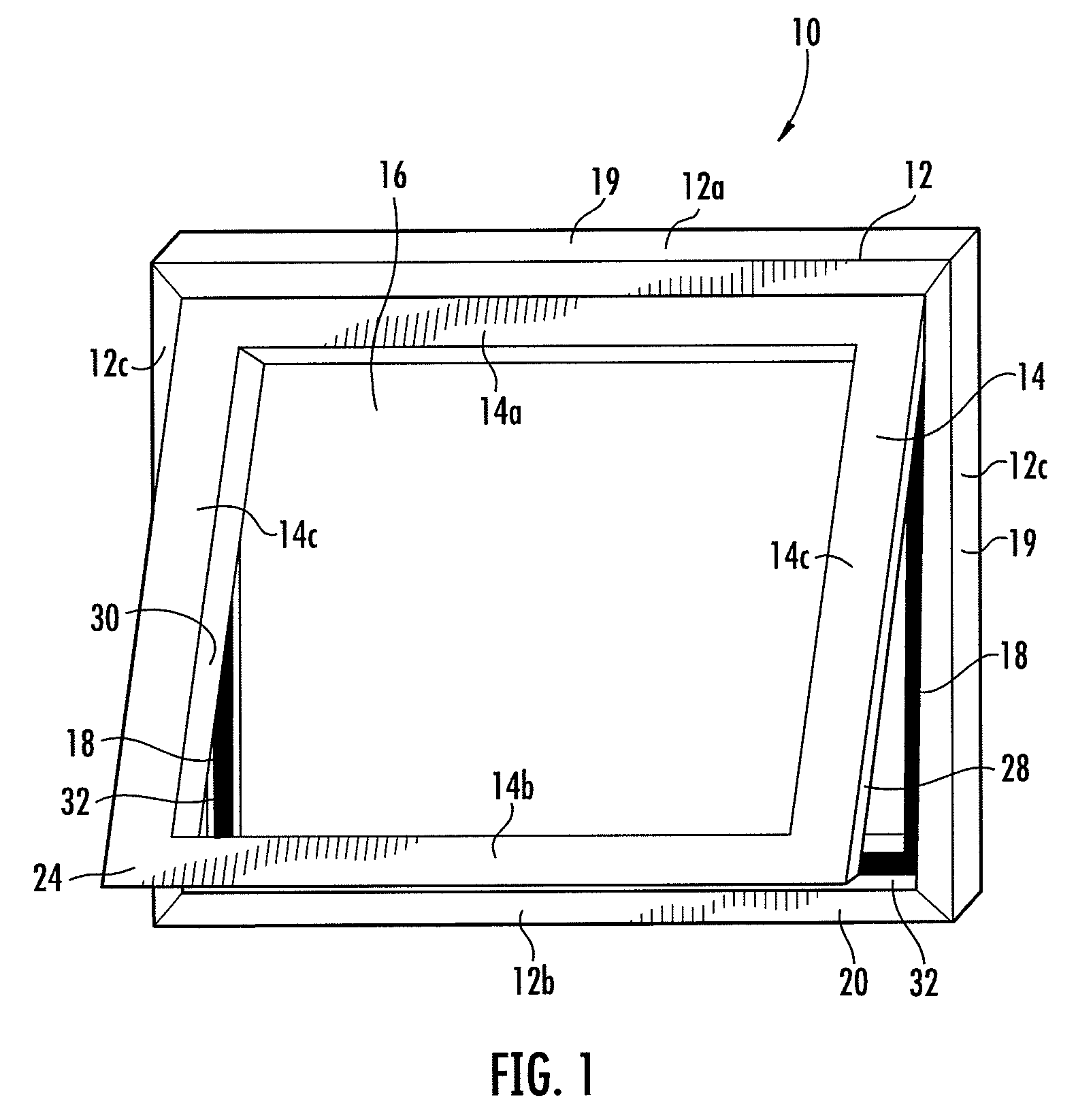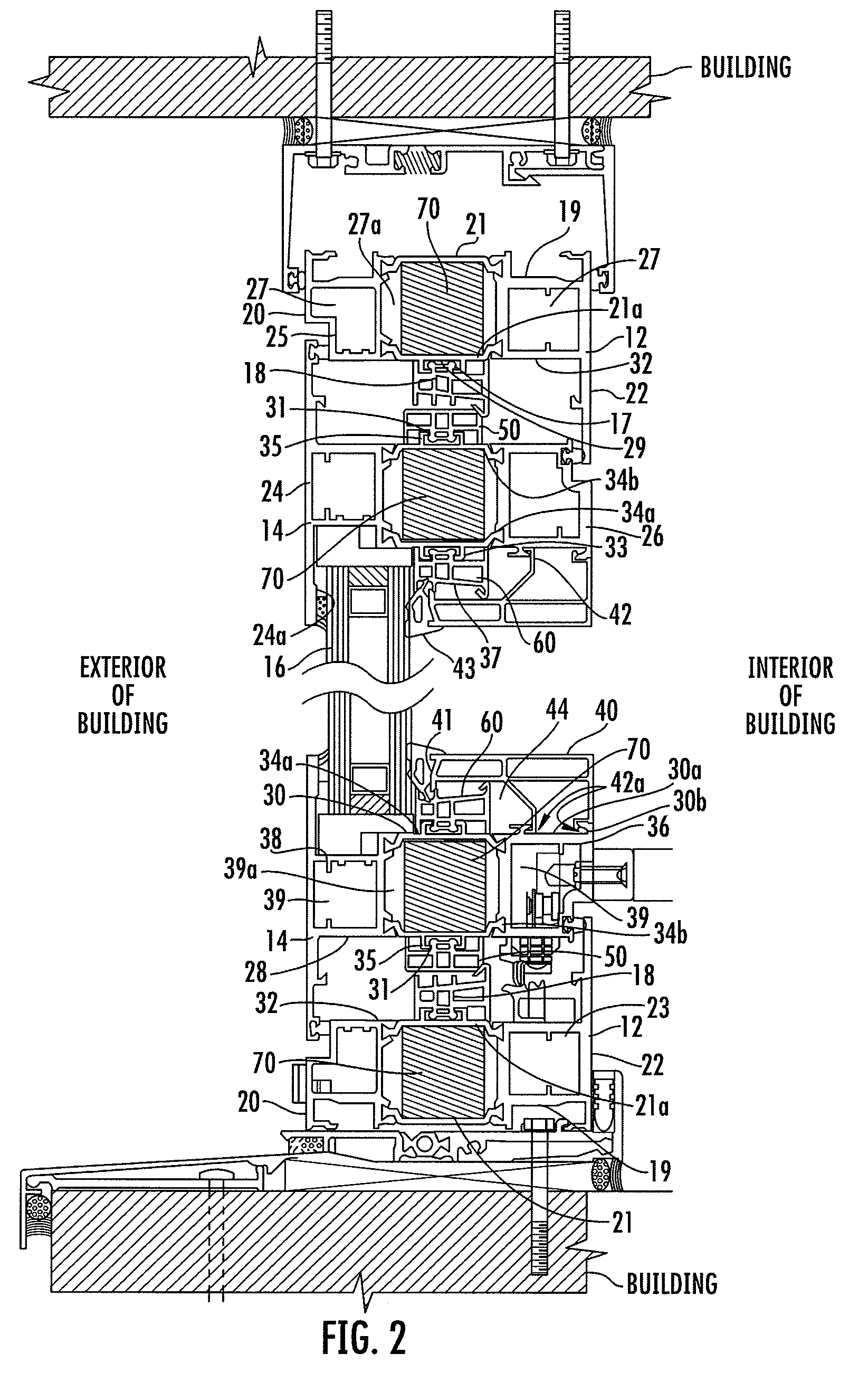Thermally efficient window assembly
a window assembly and thermal efficiency technology, applied in the direction of door/window protective devices, wing accessories, wing arrangements, etc., can solve the problems of reducing the thermal efficiency of the window assembly, and achieve the effect of increasing the thickness of the interior surface and increasing the thermal performance of the window assembly
- Summary
- Abstract
- Description
- Claims
- Application Information
AI Technical Summary
Benefits of technology
Problems solved by technology
Method used
Image
Examples
Embodiment Construction
[0003]Various embodiments of an operable window assembly include a frame, a sash, and at least one elongated frame insulating element that is formed separately from the frame. The frame has an inner surface, and the inner surface defines a track that extends outwardly from the inner surface. The track defines a retaining channel along a longitudinal axis of the track. The sash has an outer surface, and the sash is mounted within the frame such that the outer surface of the sash is disposed opposite to and cofaces the inner surface of the frame. The at least one elongated frame insulating element includes a frame engaging protrusion that extends outwardly from a first surface of the at least one elongated frame insulating element, and the frame engaging protrusion is slidably disposed within the retaining channel. In addition, the at least one elongated frame insulating element defines a plurality of chambers that extend substantially parallel to a longitudinal axis of the at least o...
PUM
 Login to View More
Login to View More Abstract
Description
Claims
Application Information
 Login to View More
Login to View More - R&D
- Intellectual Property
- Life Sciences
- Materials
- Tech Scout
- Unparalleled Data Quality
- Higher Quality Content
- 60% Fewer Hallucinations
Browse by: Latest US Patents, China's latest patents, Technical Efficacy Thesaurus, Application Domain, Technology Topic, Popular Technical Reports.
© 2025 PatSnap. All rights reserved.Legal|Privacy policy|Modern Slavery Act Transparency Statement|Sitemap|About US| Contact US: help@patsnap.com



